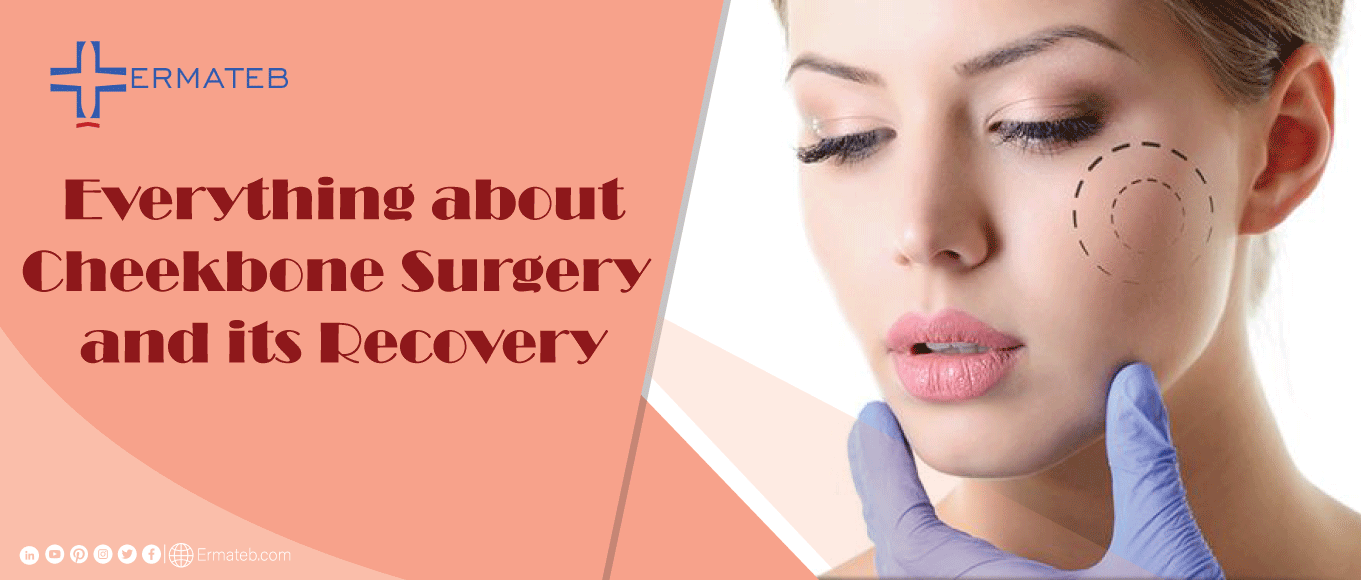
You can find the answer of your questions about Cheekbone Reduction surgery here:
This cosmetic procedure is done for reshaping facial bones and narrowing the face. The cheekbone is located in the anterior and lateral parts of the face. This surgery is one of the subsets of Cosmetic Cheek Surgeries. If you want to know more about this, read this article.
FRONTAL CHEEKBONE refers to the protuberance of your cheekbone from the front view. In order to move this region inbound, either your upper jaw or your cheekbone is excised to reduce the thickness. But the cheekbone is not very thick and there’s an empty space below, so shaving off the bone cannot abate the protrusion enough to make a dramatic change in the face. Zygoma is shifted inwards to narrow the face. This cheekbone shifting is mandatory to accomplish an impressive result.
SIDE CHEEKBONE the zygomatic arch on the side is either sternly bent or protruding. The cheekbone must be moved to curtail the curve, so the cheekbone and the zygomatic arch must be hew in the beginning. After shifting it inward, the moved bone must be tightly fixed.
In order for the hard cheekbone to make a three-dimensional shift and be positioned inward, the front and posterior region of the cheekbone must be excised. This procedure has taken into consideration both the safety and effectiveness of the surgery. In most cases, patients’ cheekbone accompanies a wide range of conditions, which requires the surgeon to combine several surgical techniques to maximize the effects. The degree to which the cheekbone looks inward can adjust the amount shift to be made through excision.
The actual surgery uses one of two techniques, as discussed above.
Place your fingers over each cheekbone. Gently lift the skin until taut. Open your mouth to form an elongated “O”; you should feel resistance in your cheek muscles. Hold for 5 seconds. Complete 10-15 sets. These techniques may help you a little but the results are not enough and permanent.
If you are having a positive outlook, realistic expectations, and specific goals in your mind for the improvement of facial appearance and how you look like it's perfect to think of having cheekbone reduction. You must be physically healthy and you should not have past serious medical conditions. If your cheekbone has prominent or it's really wide this type of operation is suggested for you.
If you are a patient who desires for slender or oval facial profile try cheekbone reduction.
Patients in all surgeries even cosmetic types should know that the risks and complications are very common. For patients having cheek reduction surgery, the list of complications is longer and can be more serious than with other aesthetic procedures. It's a kind of major procedure.
As it's clear it's a hard type of cosmetic surgeries and patients feel degrees of pain and discomfort during the initial healing phase following their surgery. The other common happenings are numbness, bruising, swelling, and ...around the operation areas.
First days patients have problems in opening their mouth and they experience tightness. All patients should know these happenings are common and transient. These symptoms last for three to four weeks.
If there are any sutures on the sideburn areas or in front of external ear canals, they are usually removed about 7-10 days following the operation. Oral antibiotics and analgesics and anti-inflammatories can be prescribed to decrease the risk of infection and postoperative pain respectively.
Cheekbone reduction will take around six weeks to heal completely after having an operation. Patients should be very careful to not apply any pressure or avoid injury to the side of the face during this recovery period. Try to avoid blowing your nose until the cheekbone has healed completely. The following tips may help you to be recovered faster:
In a series of articles about the cheek, you can find out all procedures which are done on the cheek for aesthetic goals. ERMATEB is one of the best Asian medical tourism groups which provides a variety of medical and cosmetical offers. Our patients trust us because of yielding unbelievable services at affordable costs. You can arrange your medical journey by contacting our experts. They will help you in all fields even in reserving a hotel and other stuff.
Contact ERMATEB'S professional experts who try to answer all of your questions in all medical fields as soon as possible, just contact us:
Visit our Twitter:
Follow us on Instagram:
Contact us via Email:

